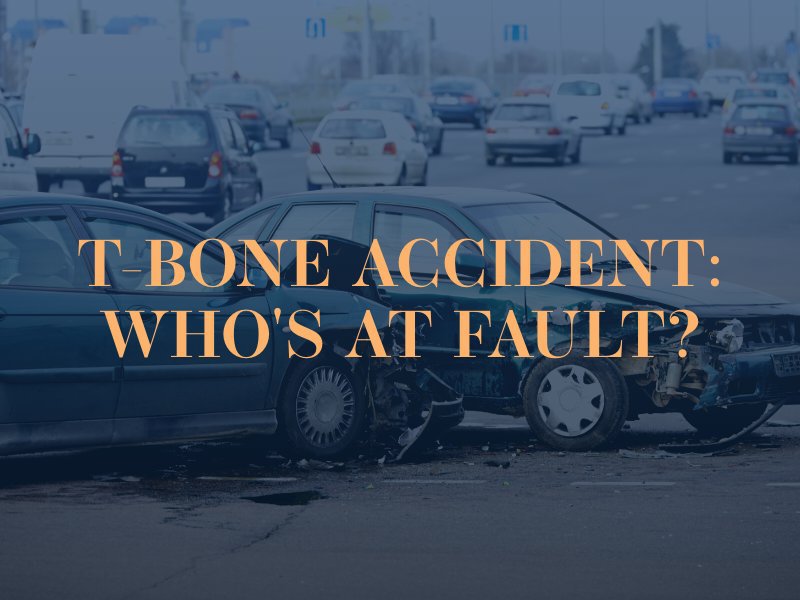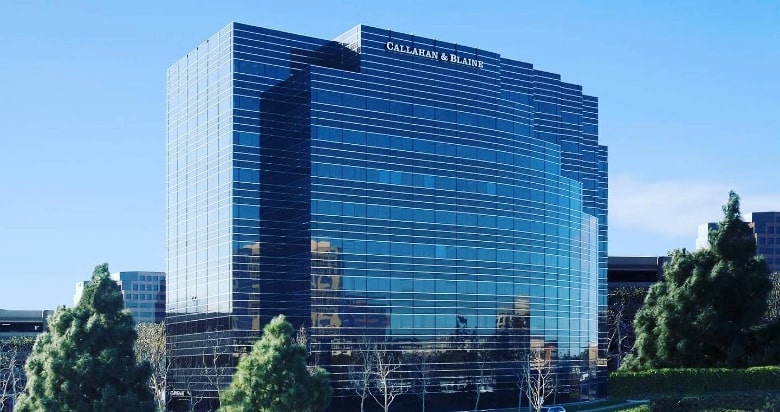While any car accident can be a scary experience and cause potential injuries for drivers and passengers, a T-bone car accident is among the most dangerous that can occur on the roadways. T-bone accidents are those in which the front of one car slams into the side of another car, forming the “T” in the T-bone collision. You may also hear these accidents referred to as broadside collisions or side-impact collisions.
Determining fault in the aftermath of a T-bone collision can be difficult, and liability will depend on the circumstances of the particular incident. According to data available from the National Highway Traffic Safety Administration (NHTSA), there are more than 10,000 fatalities caused by T-bone collisions each year in the United States.

Understanding T-Bone Accidents
Definition of a T-Bone Accident
A T-bone accident, also known as a side-impact or broadside collision, occurs when the front of one vehicle crashes into the side of another vehicle, forming a “T” shape. These accidents are particularly dangerous due to the limited protection offered by the side of a vehicle, often resulting in severe damage and potentially life-threatening injuries to the occupants. T-bone accidents frequently occur at intersections with traffic control devices, making the determination of fault a critical aspect in these cases.
Common Causes of T-Bone Accidents
T-bone accidents can arise from a variety of factors, many of which involve driver error. Common causes include:
- Driver Error: This encompasses actions such as failing to yield the right of way, running red lights or stop signs, speeding, and reckless driving.
- Distracted Driving: Drivers who are not paying attention to the road, perhaps due to texting or other distractions, significantly increase the risk of a T-bone accident.
- Failure to Maintain a Safe Following Distance: Tailgating or not leaving enough space between vehicles can lead to sudden stops and subsequent collisions.
- Inclement Weather: Adverse weather conditions like rain, snow, or fog can reduce visibility and road traction, heightening the risk of accidents.
- Vehicle Malfunctions: Issues such as faulty brakes, worn tires, or other mechanical failures can contribute to the occurrence of T-bone accidents.
Understanding these causes can help drivers take preventive measures to avoid such dangerous collisions.
Scenarios Where T-Bone Accidents Happen
T-bone accidents can occur in various scenarios, each presenting unique risks:
- Intersections with Traffic Control Devices: These are common sites for T-bone accidents, especially when drivers ignore traffic lights, stop signs, or yield signs.
- Left Turns: Making a left turn across oncoming traffic is a high-risk maneuver that can easily result in a T-bone accident if not executed carefully.
- Merging Traffic: Drivers merging onto busy roads or changing lanes without proper caution can cause side-impact collisions.
- Parking Lots: Even at lower speeds, T-bone accidents can happen in parking lots when drivers are backing out of spaces or turning into traffic lanes.
By being aware of these high-risk scenarios, drivers can exercise greater caution and potentially avoid T-bone accidents.
Either Driver Can Be at Fault in a T-Bone Collision
T-bone collisions typically occur when one driver fails to yield the right of way to another driver. For example, if a driver ignores a red light and goes through an intersection where other drivers will be passing perpendicular to their position, that driver could T-bone another vehicle or find themselves T-boned by oncoming traffic.
Determining the fault in a T-bone accident requires examining various factors, such as traffic laws, right of way, and driver behavior.
If a driver fails to yield the right of way and T-bones another vehicle or is T-boned by another vehicle, they will be at fault for the incident.
It could be the case that more than one driver is at fault for a T-bone collision. Suppose two drivers are approaching stop signs as opposed to a traffic light. Imagine that Driver A fails to stop at a stop sign and T-bones Driver B, who stopped and then proceeded. However, Driver B proceeded after their stop without looking because they were text messaging. Had Driver B been paying attention to their surroundings, they would have noticed that Driver A ignored the stop sign. In this case, both drivers could share liability for the incident.
Consulting with an experienced car accident lawyer can help assess the unique circumstances and potential value of individual T-bone accident cases.
Intersection Accidents and Fault
Left Turn Accidents and Fault
Left turn accidents are particularly complex when it comes to determining fault. In a T-bone accident involving a left turn, the driver making the turn is often scrutinized for their actions.
They may be at fault if they:
- Fail to Yield to Oncoming Traffic: Not giving the right of way to vehicles coming from the opposite direction.
- Misjudge Speed or Distance: Incorrectly estimating the speed or distance of oncoming vehicles, leading to a collision.
- Turn into the Path of an Oncoming Vehicle: Making a turn that directly crosses the path of another vehicle.
However, the oncoming driver can also share fault if they:
- Fail to Slow Down or Stop: Ignoring a red light or stop sign, thereby contributing to the accident.
- Speed or Drive Recklessly: Engaging in behaviors that reduce their ability to react in time.
- Fail to Maintain a Safe Following Distance: Not leaving enough space to stop safely, leading to a collision.
In some cases, both drivers may share responsibility for the accident. An experienced personal injury lawyer can help determine the extent of each driver’s fault and negotiate a fair settlement, ensuring that the injured party receives appropriate compensation for their losses.
Comparative Negligence in California
California is considered a pure comparative negligence state, which means that even drivers who share fault in a motor vehicle accident can recover compensation for their losses. However, the total amount of compensation a driver receives will be reduced based on their percentage of fault for the incident. For example, if a driver in a T-bone collision is awarded $100,000 in compensation for their losses, but they are found to be 30% at fault for the incident, they would only receive $70,000 in total compensation.
Proving negligence is crucial for a successful car accident claim, and having experienced attorneys can maximize compensation and effectively navigate the legal process.
Common T-Bone Collision Injuries
While T-bone collisions are not uncommon, they tend to be more devastating than crashes that impact the front or rear of a vehicle. When a vehicle hits the back or front of your car, there are several feet of engine, trunk, metal, and seats protecting you from the impact. However, in a T-bone collision, there is only a door in a window between you and the other vehicle. This can lead to severe injuries, and it is not uncommon for the following to occur in a T-bone crash:
- broken and dislocated bones
- traumatic brain injury
- spinal cord injury
- open headwound
- deep bruising
- internal organ damage
- internal bleeding
- lacerations
T-bone accident injuries can range from broken bones to traumatic brain injuries, and seeking immediate medical attention is crucial.
Each of these injuries will require immediate medical care, and victims may face long recovery times. This can lead to an impact on their personal and work lives, cause immense pain and suffering, and lead to costly medical bills and lost income. If you or a loved one was injured in a T-bone collision, speak with a knowledgeable Irvine car accident lawyer to learn about your available legal options.
The severity of injuries and the degree of fault in the accident can significantly influence the T-bone accident settlement amount.
Injured in a T-Bone Accident? Callahan & Blaine Can Help
T-bone collisions often lead to serious injuries and complicated questions about who’s at fault. At Callahan & Blaine, we’ve spent over 40 years representing injured clients in high-stakes car accident cases. Our experienced trial attorneys know how to investigate these complex collisions, determine liability, and fight to secure full compensation for your medical bills, lost income, and pain and suffering.
Whether you’re partially at fault or the victim of another driver’s reckless actions, we’re here to protect your rights and help you move forward. Call us at (714) 241-4444 or contact us through our contact form to schedule a consultation with a senior attorney.

